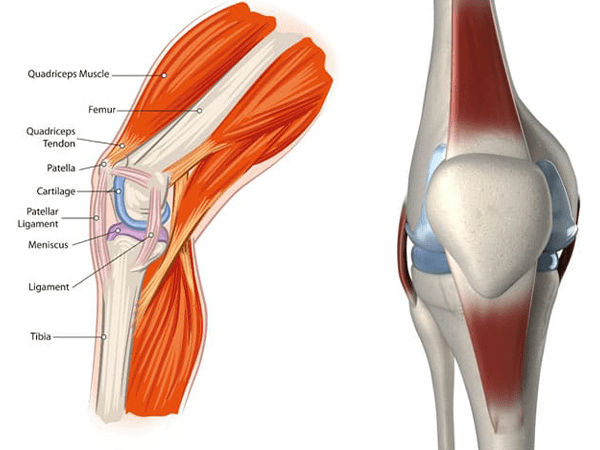What is Patellar Tendinitis?
Patellar tendinitis, also known as jumper’s knee, is a condition characterized by inflammation and pain in the patellar tendon, which connects the kneecap (patella) to the shinbone (tibia). It is commonly caused by repetitive stress or overuse of the knee joint, often seen in athletes involved in jumping or running activities. Symptoms include localized pain, tenderness, and swelling around the knee. Rest, ice, physical therapy, and anti-inflammatory medications are typically recommended for treatment. Severe cases may require more extensive interventions like corticosteroid injections or even surgery.
What causes Patellar Tendinitis?
Patellar tendinitis, or jumper’s knee, is primarily caused by repetitive stress and overuse of the patellar tendon. Activities that involve frequent jumping, such as basketball or volleyball, or those that require repetitive knee bending, like running or cycling, can strain the tendon. Other contributing factors include inadequate warm-up or stretching before exercise, poor form or technique, imbalances in leg muscles, and insufficient recovery time between workouts. Certain risk factors like tight or weak muscles, previous knee injuries, or biomechanical abnormalities may also increase the likelihood of developing patellar tendinitis.
What are the Symptoms?
Symptoms of patellar tendinitis, also known as jumper’s knee, typically include pain, tenderness, and swelling around the patellar tendon. The pain is usually felt just below the kneecap and may worsen with activities that involve jumping or bending the knee, such as running or squatting. The pain may be sharp or dull, and can range from mild discomfort to severe, limiting mobility. In some cases, a palpable lump or thickening of the tendon may be felt. If left untreated, the symptoms may persist and interfere with daily activities.
Who is at risk for developing knee tendinitis?
Several factors can increase the risk of developing knee tendinitis. Athletes who participate in sports that involve repetitive jumping or bending movements, such as basketball, volleyball, or track and field, are particularly susceptible. Individuals who have tight or weak leg muscles, poor flexibility, or muscle imbalances are also at higher risk. Other risk factors include previous knee injuries, inadequate warm-up or stretching routines, excessive training or overuse of the knee joint, and biomechanical abnormalities. Age can also be a factor, as tendons tend to become less flexible and more prone to injury with age.

How is it diagnosed?
Diagnosing patellar tendinitis typically involves a combination of medical history assessment, physical examination, and imaging studies. The doctor will inquire about symptoms, previous injuries, and activity levels. They will then perform a physical examination, checking for tenderness, swelling, and range of motion in the knee. Imaging tests like X-rays or MRI scans may be ordered to assess the severity of the condition and rule out other potential causes of knee pain. In some cases, ultrasound imaging or specialized tests like a patellar tendon stress test may be performed to further evaluate the tendon’s condition.
How is it treated?
Treatment for patellar tendinitis usually involves a combination of conservative measures. damage. Applying ice packs and using nonsteroidal anti-inflammatory drugs (NSAIDs) can help reduce pain and inflammation. Physical therapy is often recommended to strengthen the surrounding muscles, improve flexibility, and correct any biomechanical issues. Supportive devices like knee braces or straps may provide additional stability. In severe cases, when conservative methods are ineffective, corticosteroid injections or, rarely, surgery may be considered as options for treatment.
Surgical Options
Surgical options for patellar tendinitis, although rare, may be considered in severe cases that do not respond to conservative treatments. One surgical procedure is known as patellar tenotomy, where a portion of the damaged tendon is removed to relieve tension. Another option is patellar tendon debridement, which involves the removal of damaged tissue and repair of the tendon. In some cases, surgical repair or reconstruction of the patellar tendon may be necessary. These procedures aim to alleviate symptoms, improve function, and promote healing of the tendon. Rehabilitation and physical therapy are typically part of the post-surgical.
